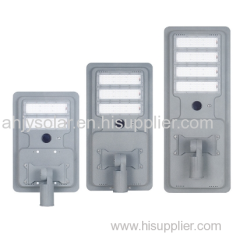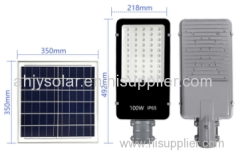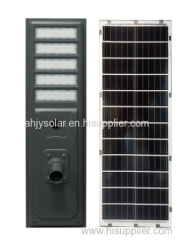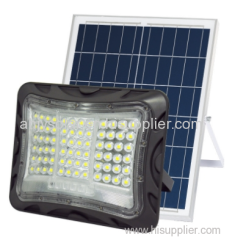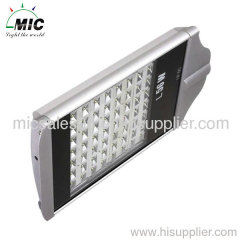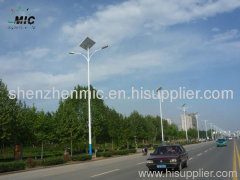
MIC solar led street light
1.0~100.0 USD
| Min. Order: | 1 Piece/Pieces |
|---|---|
| Trade Term: | FOB |
| Payment Terms: | L/C, T/T, WU |
| Supply Ability: | 150000 |
| Place of Origin: | Guangdong |
Company Profile
| Location: | Shenzhen, Guangdong, China (Mainland) |
|---|---|
| Business Type: | Manufacturer |
| Main Products: | Led Street Light. Led Traffic Light. Led Flood Light. Led Tunnel Light. Led Panel Light. Led Down Light. Led T |
Product Detail
| Model No.: | MIC led street light 42w |
|---|---|
| Means of Transport: | Ocean, Air |
| Solar Cell Type: | Ni-MH |
| Charging Time (h): | 6 |
| Usage: | Street |
| Brand Name: | MIC |
| life span: | 50000H |
| Production Capacity: | 150000 |
| Packing: | white box or carton |
| Delivery Date: | 5-15days for bulk order |
Product Description
MIC E40 20W led street light,e40 24w led street light,e40 28w led street light,e40 30w led street light,e40 60w led street light
An LED street light is an integrated light that uses LEDs as its light source. These are considered integrated lights because, in most cases, the luminaireand the fixtureare not separate parts (except LEDGine-based luminaires). New in manufacturing, the LED light cluster is sealed on a panel and then assembled to the LED panel with a heat sinkto become an integrated lighting fixture.
Different designs have been created that incorporate various types of LEDs into a light fixture. The current trend is to use high power 1 watt LEDs, but some companies use low power LEDs in their products, including several low power LEDs packed together to perform the same purpose as a single high power LED. The shape of theLED street light depends on several factors, including LED configuration, the heat sink used with the LEDs, and aesthetic design preference.
Heat sinks for LED street lights are similar in design to heat sinks used to cool other electronics such as computers. Heat sinks tend to have as many grooves as possible to facilitate the flow of hot air away from the LEDs. The area of heat exchange will directly affect the lifespan of the LED street light.
The lifespan of an LED street light is determined by its light output compared to its original design specification. Once its brightness decreases by 70 percent, an LED street light is considered to be at the end of its life.
Most LED street lights have a lens on the LED panel, which is designed to cast its light in a rectangular pattern, an advantage compared to traditional street lights, which typically have a reflector on the back side of a high-pressure sodium lamp. In this case much of the luminance of the light is lost and produces light pollutionin the air and surrounding environment. Such street lights can also cause glare for drivers and pedestrians.
A drawback of LED focus panels is that most light is directed to the road, and less light to the footpaths and other areas. This can be addressed by the use of specialised lens design and adjustable mounting spigots.
Energy efficiency
The primary appeal ofLED street lighting is energy efficiency compared to incandescent bulbs of the same luminance. Research continues to improve the efficiency of newer models. One such advance can be found in a street light product created by Lighting Science Group Corporation. One model of LED street lights produced by this group is up to 60 percent more efficient than previous models, lasts for 12 years, and allows for cost recovery through energy savings in only three years.
An LED street light based on a 901 milliwattoutput LED can normally produce the same amount of (or higher) luminance as a traditional light, but requires only half of the power consumption.
As the LED lighting fixtures normally produce less lumen/Watt illumination it is very crucial to have a well distributed illumination pattern in order to do the same job as higher lumen/Watt conventional fixtures. So a good design of LED street lights is to point different LEDs in one fixture to different target points.
Advantages
Low power consumption and long and predictable lifetime
The lifetime of LED street lights is usually 10 to 15 years, three times the life of current technologies adopted. LEDs also have low maintenance cost.
Dimming
LEDs can be dimmed when less street lighting is needed, such as late nights and early mornings.
Small package size
More accurate color rendering
The color rendering index is the ability of a light source to correctly reproduce the colors of the objects in comparison to an ideal light source.
Quick turn on and off
Unlike fluorescent bulbs, which take time to heat up once switched on, LEDs turn on instantly, and do not have a problem restarting immediately after being turned off (hot ignition).
RoHS compliance
LEDs don't contain Hg/Pb and don't emit poisonous gases.
Less attractive to nocturnal insects
Insects are sensitive to the UV-blue and green region of the light spectrum. Nocturnal insects are attracted to the emission of UV-blue and green light from conventional light sources. White LEDs, however, emit light in a small peak in the blue range and smaller in the green range, so nocturnal insects are less attracted to such light sources.
Easy to design non-glare lighting equipment
Most LED street lights have a lens on the LED panel, which is designed to cast its light in a rectangular pattern, an advantage compared to traditional street lights, which typically have a reflector on the back side of a high-pressure sodium lamp. In this case much of the luminance of the light is lost and produces light pollution in the air and surrounding environment. Such street lights can also cause glare for drivers and pedestrians.
Higher light output even at low temperatures


